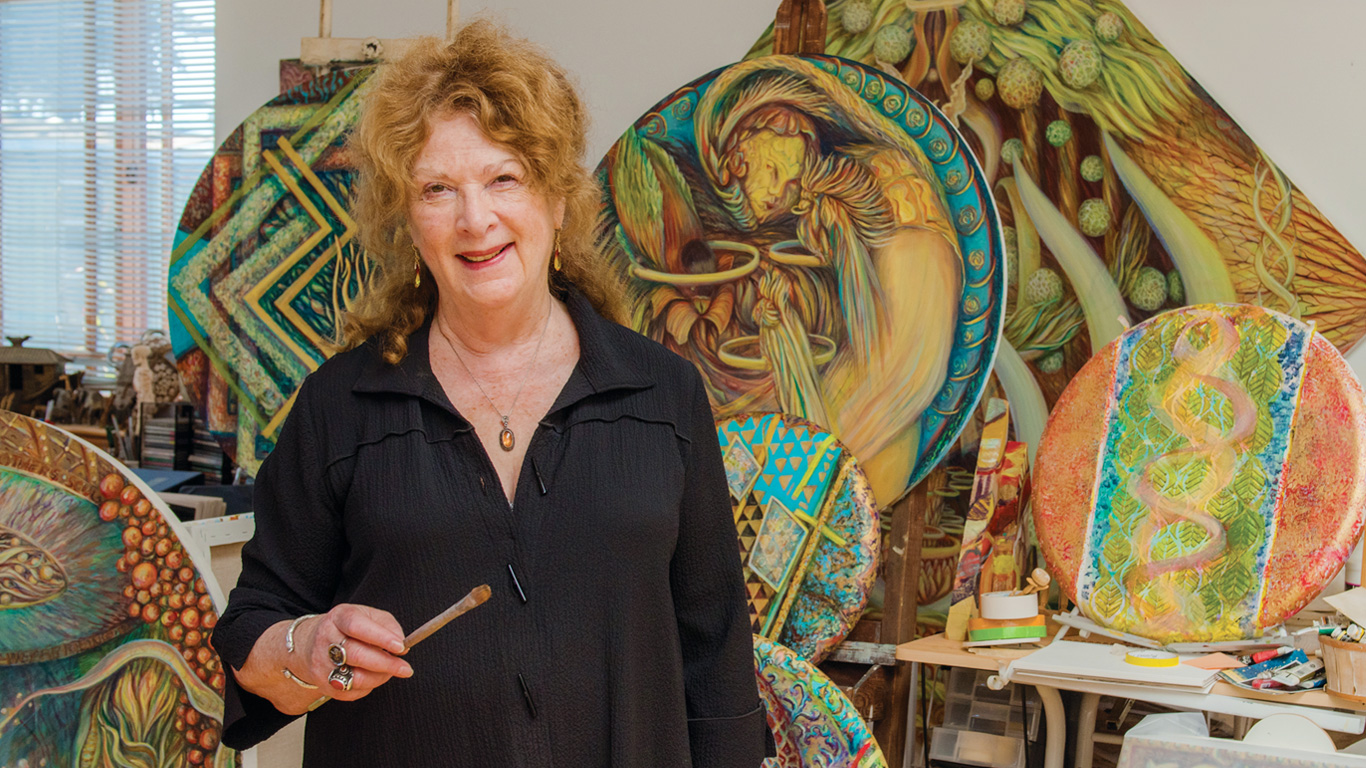

In the early 1970s, Gilah Yelin Hirsch was an artist whose paintings were widely recognized, but it was a time when art by women was rarely in major museums and exhibits around the world.
In 1971, to draw attention to the sexism in the art scene, particularly in Los Angeles, Hirsch collaborated with a small group of women to found the Los Angeles Council of Women Artists (LACWA), which helped “pave the way to equality for women artists” everywhere, according to Hirsch.
Hirsch has been invited to house her archive of original documents on the creation of LACWA at the Smithsonian Archives of American Art in Washington D.C.
“It’s really a tremendous honor, and I’m very pleased to be included in the national archives. I was the council’s main writer, and wrote the organization’s first manifesto. I hand wrote the original then typed it and made the corrections with pencil [which is included in the archive],” said Hirsch, an internationally recognized artist who has been teaching art at California State University, Dominguez Hills since 1973. “The manifesto, along with all the other documents, are statements of the very first women artist movement in the world.”
In 2011, the J. Paul Getty Trust funded a scholarly initiative called Pacific Standard Time: Art in L.A. to gather, document, and showcase the history of contemporary artists and others who were integral to Los Angeles’ art scene from 1945-1980. As part of the initiative, Los Angeles-based Otis College of Art and Design exhibited Doin’ It in Public: Feminism and Art at the Woman’s Building about the non-profit arts and education center in downtown Los Angeles that supported female artists and cooperatives during the 1970s and ’80s. Both institutions approached Hirsch to see if she had LACWA documents to copy and include with their online research.
“I went through all the gritty boxes in storage, and sure enough–much to my surprise–there they were. There were about 40 documents. The Getty and Otis made copies and posted them on their websites,” said Hirsch. “Then I immediately began getting calls for more information, more interviews, and from scholars wanting to do Ph.D. thesis work on the early feminist art movement. Who knew that what we were doing would become historic and significant in the history of art? Prior to that, women did not exist in art. So the first box I sent to the Smithsonian contained all originals.”
Who knew that what we were doing would become historic and significant in the history of art? Prior to that, women did not exist in art. – Gilah Yelin Hirsch
The “gritty boxes” provided a treasure trove of local art history for the Smithsonian, from handwritten notes, documents, and correspondence related to LACWA’s origins, to articles, council member lists, and other materials that offer an insider’s perspective of L.A.’s art scene at the time.
LACWA’s first meeting took place in one of its founder’s (Joyce Kozloff) small apartment in Santa Monica, said Hirsch. It included female filmmakers, fine artists, composers, architects, and others.
Among its various accomplishments, LACWA is renowned for its work 45 years ago of exposing the Los Angeles County Museum of Art’s (LACMA) “total absence” of women artists in its museum and its exhibits.
In response to the Art and Technology exhibition at LACMA in 1971, LACWA issued a report to the museum in protest of the absence of women artists in the show, as well as generalized art-world sexism. LACWA also conducted protests and handed out literature at the museum. On several occasions, they counted and documented the art that hung in the museum, and the data that was included in . The council also met with the director of LACMA regarding making the report public.
“We were the first to document how many female artists had been represented in the Los Angeles County Museum of Art, and we found none. One thing we discovered through our research is that the artists who were listed as ‘anonymous’ [in the museum] were often the wives, mistresses, sisters, and daughters of male artists,” said Hirsch. “There were also confrontations–vocal in nature–with a male hierarchy, who didn’t want to hear from us. They didn’t want us to change the status quo.”

In a short period of time, LACWA had recruited more than 80 members. The council set a precedent for later feminist groups, such as the Guerrilla Girls, and they are particularly noted as the inspiration to the opening of the Women’s Building.
“We were a very active movement,” said Hirsch. “We attracted a lot of the media attention, which was useful in disseminating information. We grew exponentially and spawned other organizations, such as Woman Space, Woman House and the Women’s Building. And among the many tributary organizations the Women’s Caucus for Art continues to this day.”